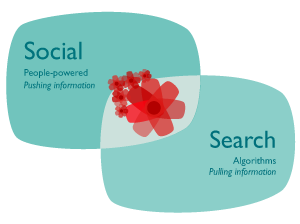What's more valuable, the content or the platform?
It is no secret, at least here in the USA, that the traditional newspaper and print publishing industries have been forced to undergo significant change, adaptation, and even re-invention not only to thrive in the new digital economy, but merely to survive. While the last decade has seen the rise of new information sources architected completely for the digital age, and some other long-time industry standard bearers adapt to this new world, many others have failed and have declared bankruptcy. Being in the print news business certainly has not been easy, and for those organizations still fighting the battle for reader's time and attention with the incredible array of options for news and information that are available, it certainly seems that creativity, innovative ideas, and fresh thinking might be the only way to get by.
Two such enterprises, the Philadelphia Inquirer and the Philadelphia Daily News think they have one of these fresh ideas. They plan to buy Android-based tablet computers, pre-load them with their news organization's content and apps, then re-sell the bundle (at a discount), to try and generate interest and ongoing subscription revenues for their digital content properties. Some additional details from the Ad Week piece describing the plan:
On July 11, the two papers plan to announce a pilot program under which they will sell Android tablets with their content already built in at a discount. Icons on the tablets' home screen will take users to digital replicas of both newspapers as well as a separateInquirer app and Philly.com, the papers’ online hub.
The idea of giving away or selling devices has been widelydiscussed in the publishing industry, but the Philadelphia experiment seems to be the most aggressivepush in that direction thus far.
Greg Osberg, CEO and publisher of the Philadelphia Media Network, the entity that includes the papers and Philly.com, believes the company is making history with the program, the cost for which he estimated will come in somewhere in six figures. The deal lets the Philadelphia papers keep all the revenue and the consumer data, though, which will give it a read on how people consume newspaper content on a tablet.
A pretty bold move for sure. The Philly news organizations (correctly), get that the tablet market is where tremendous interest and consumer adoption are taking place, they can see hundreds if not thousands of locals riding buses and trains playing Angry Birds reading the news of the day on tablets and smartphones, and therefore want to create and exploit an opportunity to try and merge a real consumer need - 'I want a tablet', with a manufactured need - 'I want to read the Philly Inquirer'.
It seems today that every publisher, consumer website, online productivity tool, and even increasingly enterprise technologies meant to support functions like recruiting, performance and talent management, analytics and the like are developing solutions for mobiles and tablets, and aggressively marketing the same. And this makes perfect sense given the market's reaction and almost insatiable desire for all things mobile and tablet.
I wonder, particularly in the HCM enterprise technology space, if we will see a 'Philly Inquirer-style', marketing approach soon as well. One where the solution provider does more than simply demo their tablet-ready solution to an eager buying audience, but rather offers the entire package, pre-loaded pre-configured, and ready to work. Walk out of the meeting toting your brand new, ready to rock, Human Capital Management tablet. I know I am oversimplifying, but you get the idea. How many of us try on that new pair of kicks in the Foot Locker and just have to wear them home?
Corporate IT departments have been doing this kind of thing for ages, supplying staff with PCs and laptops with the 'official' image and set of applications that are supported. But today, I wonder if this process is too slow, too inflexible and not designed for today's much more demanding consumers of enterprise technology.
Any vendor out there in the space already doing this? If you know of someone, drop me a comment.

 Steve
Steve







